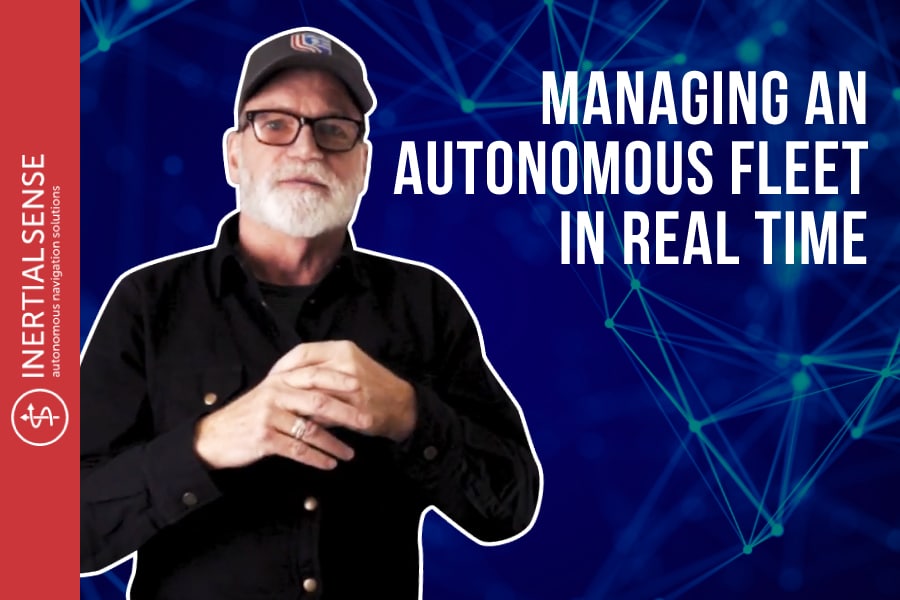
Managing an Autonomous Fleet in Real-Time
You probably want your autonomous fleet to be self-sufficient, right? The beautiful thing is, at Inertial Sense, that is one of our main focuses. We want your device to be as autonomous as possible. Watch the video below for more about what our platforms and applications offer for your autonomous robotics fleet.
Three thoughts arise within companies:
- Will my device be safe and how does it handle obstacles?
- What is the cost to my company and our customers?
- How quickly can this be accomplished?
Inertial Sense really drills down on this area. We want to be good at developing the highest performance, lowest cost solution. We understand that we need to offer something that fits our customer’s business model, not just ours.
Object avoidance is a key part of what we do. Our path planning and control focuses on the autonomous fleet of robotic devices knowing what to do after it encounters an object.
We also offer a full-stack solution. Our customer can provide us with a spec as simple as the diameter of their wheels, the velocity of their accelerators, how powerful the engine is, and even how it’s being driven. We take this information and write to the API to integrate it into their system.
Give us a call today or click the link, and find out from one our knowledgeable experts how we can elevate your autonomous robotics!
Learn More:
What It Means To Be a Full-Stack Solution in Autonomous Robotics
No One Does What We Do. Inertial Sense is Your Full Stack Solution.
The LUNA Platform – How Our System Works
Video Transcript
There are probably three things that come up with companies who are interested in autonomous robotics. One of them is, is my device going to be safe? Does your autonomous platform handle things like obstacle avoidance and other safety issues? The second is, is it going to significantly add to the cost or to build the materials for my unit that’s going to drive the cost of what I’m doing out of the price range that my customers can afford? Third is, how quickly can we do this?
Again, I think that’s where we focus really well on that value proposition. We’ve always been really good at developing the highest performance, lowest cost solution. Whether it’s our sensors, or whether it’s our autonomy platform, we’ve always focused on that. We come in at a really good level of understanding that it’s got to fit in the customer’s business model, not just ours.
The second is, object avoidance is a key part of what we’re doing. Everything from simple bump sensors to LIDAR and SONAR and other applications. SONAR being what you have as a backup camera in your car all the way up to LIDAR, which is really understanding what the object is and avoiding it. The key challenge then is what do you do next? Our path planning and our control is great at telling the robotic device what to do after it encounters the object itself.
The third part is because we have a full-stack solution, all parts of it are exposed by APIs. It’s relatively simple for the customer to provide us with a spec that says, here’s the diameter of our wheels, here’s the velocity of our accelerators, here’s how powerful the engine is. It’s being driven by either a joystick or a steering wheel or levers, and then we just basically help them write to that API to integrate it. But they’re all inputs to us. It’s all kind of the same process no matter what system the customer is using.

